MASCOTS
November 2018
ID: P1
PARALLEL STAGE: Pupils explore emblematic figures and artefacts from their country’s cultural heritage. With the assistance of art teachers, they learn the art of mascot design and construction. One mascot is chosen and built to represent the country in the partnership.
INTERACTION STAGE/ OUTPUT: Each country’s design is digitally shared, along with the history of the figure or artefact it represents. Partners are paired to rework each other’s mascots into art or comic strips. Output is shared and discussed (via videoconference or TwinSpace, with teacher assistance, depending on pupils’ age). The groups of pupils working at the interaction stage need not be the same as those who originally designed the mascots.
FOLLOW-UP: Mascots travel on LTTs and are exchanged between schools, along with a designated passport for each one. Passports are in the form of journals, in which pupils record project-related activities with pictures and text.
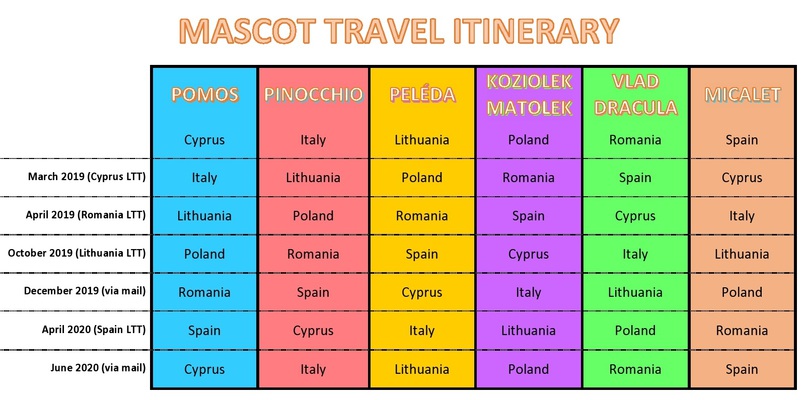
FOLLOW-UP: Pinocchio visits Cyprus
Students in Cyrpus disciovered Pinocchio's story while learning about figure drawing and exploring their country's cultural heritage. The result are these creative collages showing Pinocchio around different cultural sites in cyprus.

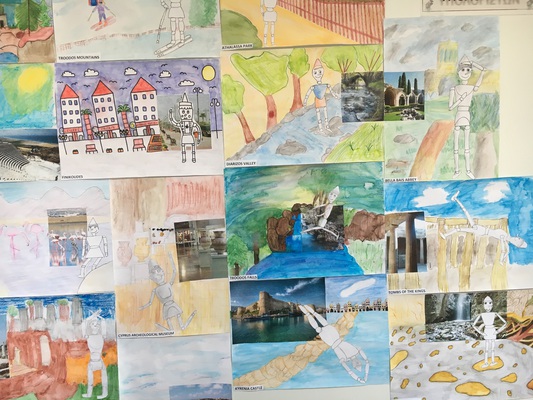
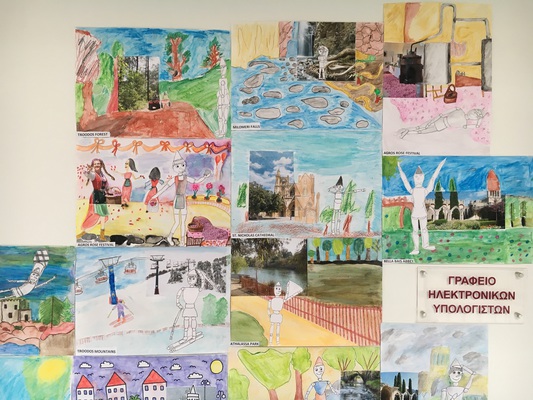

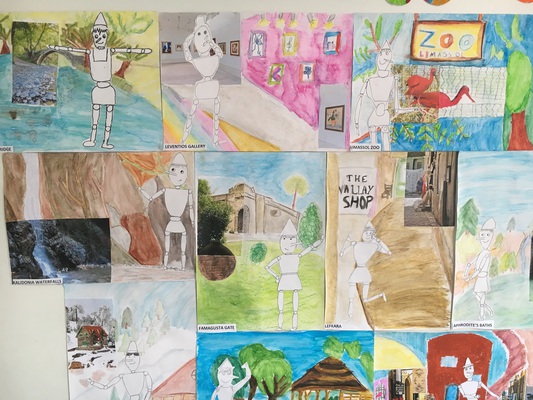
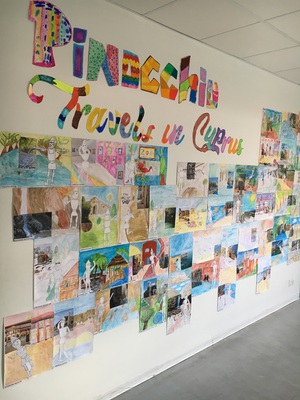
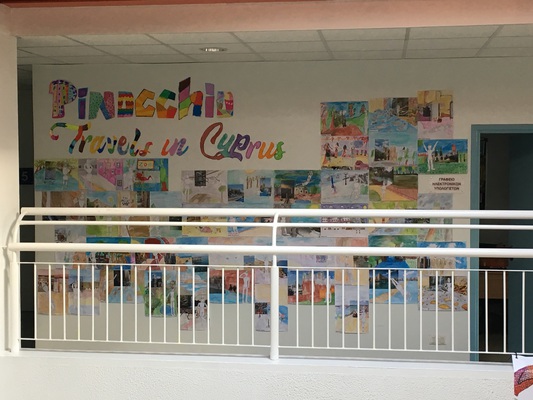
PELĖDA: the Lithuanian mascot
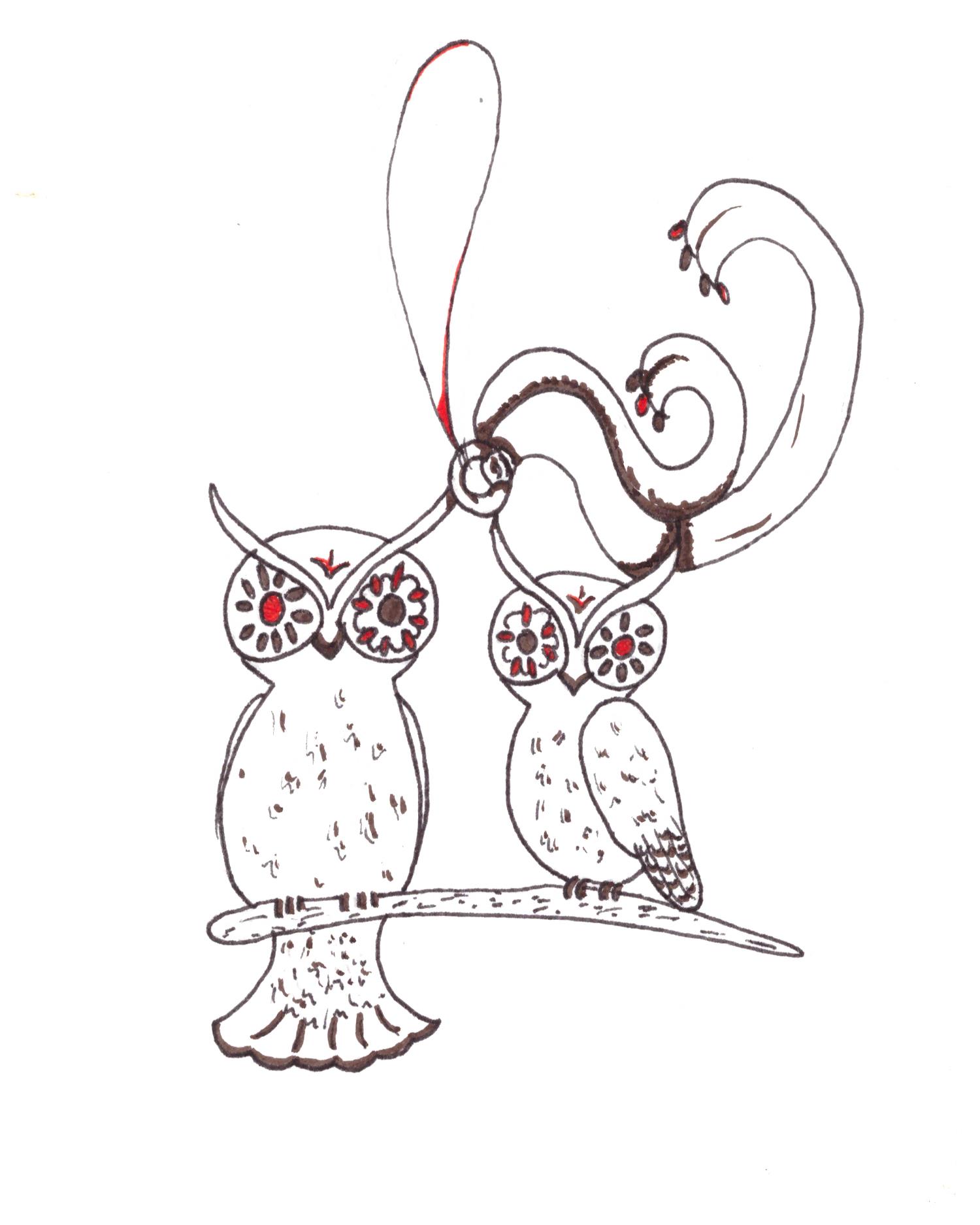
The Owl as the Lithuanian mascot for the Project.
An owl is an impressive nocturnal bird! Its flight is extremely silent and mysterious, the glance of its distinctive round eyes is fascinating and alluring, if you succeed to catch it. An owl is a frequent character of children’s folk songs in Lithuania. The presence of archaic symbols and ancient religious rituals modified and entwined into songs and games is traced by the researchers of the nation’s creation works.
Presumably, mythologization of the bird has originated from its nocturnal way of life, soundless flight, deep and soft hooting, and magnetic eyes. The story tells about the God awarding eyes to the owl very late in the evening as it was about the last to approach the God for talent sharing. That’s why owls have a sharp sight in the dark.
The owl as a symbol of wisdom and intuitive knowledge is shared with other cultures by us. In Greek mythology, the goddess Athena is often accompanied by a little owl while the owl in the Christian culture has a meaning of the God‘s light and the cognition of religion. PELĖDA (THE OWL) was one of the first ABC books in the pre-war Lithuania.
Mascots were designed by pupils aged 7-13. 265 mascots have been created and the best 18 were selected and placed for online voting by the entire school community. 454 votes were gathered and the owl preferred by 31 percent of voters.
MICALET: the Spanish mascot
Bell tower "El Miguelete" is a gothic style construction made in the fourteen century and finished in the fifteen. Authors were Cathedral’s master Andrés Juliá and the architect Pere Balaguer, who also built Serranos Towers.
Constructed on an octagonal base, its perimeter is same to its height, more than fifty meters. The bell tower have four bodies of the same height, the last one is the bells hall, open by eight picture windows.
Its name, "El Miguelete", comes from the name of its biggest bell "Miguel", made in 1532 and with more than ten tons of weight. Inside there is an enormous spiral staircase with 207 steps up to the summit from where you can enjoy amazing views of the city, even the sea.
OUR MASCOT:

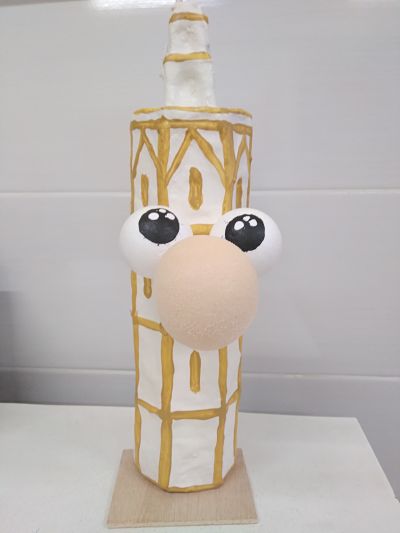

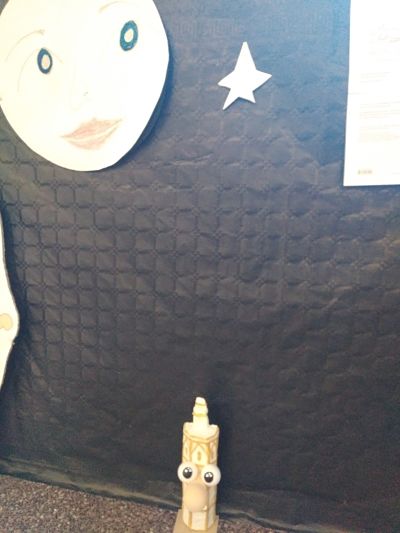
The mascot has been built on 26th November (2018) in wich, Students had the talk by the expert by the students of the C.E. Special Education Center.CENTRO ESPECIAL RUÍZ JIMÉNEZ under the supervision of the expert professor in the elaboration of ninots ÓSCAR HILARIO JIMÉNEZ. with students of our School CEIP RAMÓN LAPORTA
The most amazing thing has been that, Students with Special Education have guided, evaluated the process to our students, teaching the different techniques for the elaboration of a "ninot".
It has been a very rewarding activity for all students and the Educational Community.
Children have learned the steps to follow in the elaboration of a ninot "typical figur in the fallas".
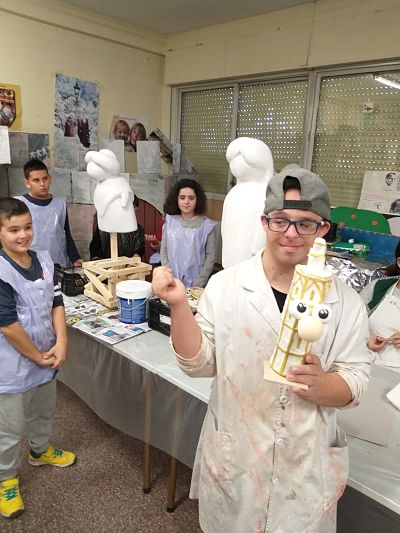
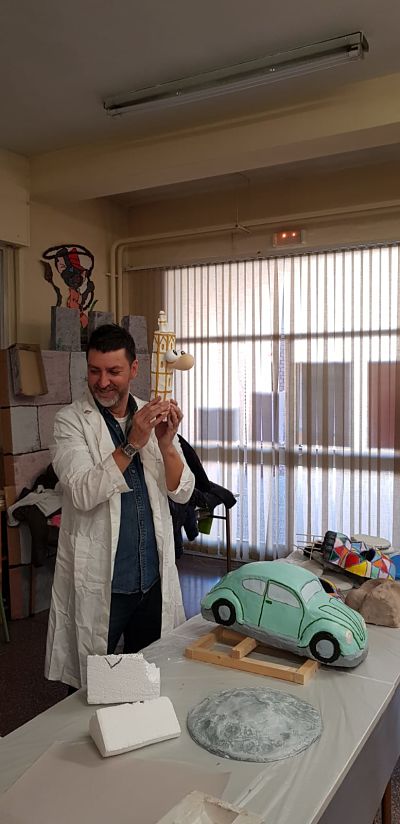
Óscar Hilario Jiménez (teacher- expert ninot´s building)
MATOLEK: the Polish mascot
Polish Mascot is called Koziołek Matołek Eng.: Matołek the Billy-Goat. He is a fictional character created by Kornel Makuszyński (storywriter) and Marian Walentynowicz (art). It is one of the first and most famous Polish comics back in 1933. It has become a cult classic, popular since its creation till today, and an important part of the canon of Polish children's literature.
The story is set in Pacanów. It is a real town in Poland. The stories center around the quest that Matołek undertakes: to find Pacanów, a town where it is said they make shoes for goats.
Matołek's adventures are amusing if sometimes unbelievable. Matołek's search for Pacanów takes him to many corners of the Earth, from Africa to the Wild West. He is a real globtrotter!
The Matołek’s appearance has a visible patriotic undertones. His colours are white and red - white fur and red shorts, evoking the flag of Poland. Matołek has visited many places around the globe but we still want him to travel more, to travel with us for more adventures, experiences and to make new friends :-)
At Polish school - Primary School No 5 in Bielsk Podlaski, pupils have designed 9 mascots. Among the others others there is Koziołek Matołek, Wawel Dragon, Beautiful Girls from Podlasie Voividship, a teddy bear, a cat, a stork. Most of them are really beautiful. Because it was a contest for pupils for the Erasmus+ project mascot, the jury of the contest had a very difficult task to choose the best one. The best mascot was designed by Anna Wróblewska a 14 years old girl from 7th grade. The best designes were awarded with diplomas and prizes.

Here ate three the best of the bests mascots designed and made by Polish pupils. Enjoy!
VLAD: the Romanian mascot

Vlad Ṭepeş (Vlad the Impaler)- RULER OF WALACHIA
the Romanian mascot is Vlad ŢepeŞ- vlad the impaler
Vlad the Impaler or Romanian Vlad Țepeș, (born 1431, Sighișoara, Transylvania (now in Romania)—died 1476, voivode (military governor, or prince) of Walachia (reigned in1448; 1456–1462; 1476) whose cruel methods of punishing his enemies gained notoriety in 15th-century Europe. Some in the scholarly community have suggested that Bram Stoker’s Dracula character was based on Vlad.
Vlad was the second of four brothers born into the noble family of Vlad II Dracul. His name Dracula (meaning “son of Dracul”) was derived from the Latin draco (“dragon”) after his father’s induction into the Order of the Dragon, created by Holy Roman Emperor Sigismund for the defense of Christian Europe against the Ottoman Empire.His penchant for impaling his enemies on stakes in the ground and leaving them to die earned him the name Vlad the Impaler (Romanian: Vlad Țepeș). He inflicted this type of torture on foreign and domestic enemies alike: notably, as he retreated from a battle in 1462, he left a field filled with thousands of impaled victims as a deterrent to pursuing Ottoman forces.
It often has been thought that Stoker based the title character of Dracula on Vlad. Though Stoker’s notes for the novel do include mentions of “Dracula,” the historical account from which the notes were taken mentions only the appellation, not the deeds for which its bearer was known. Some scholars have speculated that Stoker’s conversations with a noted historian, Hermann Bamburger, may have provided him with information on Vlad’s violent nature, though there is no concrete evidence to support that theory.
Dracula is arguably the most important work of vampire fiction. The tale of the Transylvanian count who uses supernatural abilities, including mind control and shape-shifting, to prey upon innocent victims inspired countless works thereafter. In modern Romanian, dracul means "the devil", which contributed to Vlad's bad reputation.
The stories about Vlad made him the best-known medieval ruler of the Romanian lands in Europe. However, Bram Stoker's Dracula, which was published in 1897, was the first book to make a connection between Dracula and vampirism. Stoker had his attention drawn to the blood-sucking vampires of Romanian folklore by Emily Gerard's article about Transylvanian superstitions (published in 1885).
In School “Sfantul Andrei” from Romania, there were designed 32 drawings with possible mascots, being 18 with the same character “Vlad Ṭepeş”- Vlad the Impaler. The best one was voted by children with ages 9-14 years old with 43%. This design belonged to the pupil Preda Bianca, a 14 years old girl from 7th grade.

POMOS: The Cypriot mascot
Year 3 students from Cyprus worked on designing the project mascot. They explored different artefacts, costumes, monuments, indigenous species, and even local foods from Cypriot cultural heritage. Each student chose one element they liked and reinterpreted it as a mascot design.
THE SIX DESIGNS THAT WERE PUT TO A VOTE:
The winning design belongs to Harry Vassiliou from 3 Blue. Harry’s work is based on the Pomos figurine, a prehistoric piece of sculpture that got its name from the village of Pomos, where it was found. It is made of stone and dates back to 3000 BC. The figurine is a typical sample of prehistoric art in Cyprus and reveals obvious similarities to Cycladic art, which dominated Greek artefacts from the same era. You can see the actual figurine in the Cyprus archaeological museum or represented on the Cypriot euro coins.
The figurine is shaped as a cross, representing a human figure with open arms. Similar cross-shaped figurines have been found elsewhere in Cyprus as well, revealing that they were quite common during the Bronze Age. Archaeologists believe that they were kept as good luck or fertility charms. Some of them even have a little hole at the top, allowing them to be worn on necklaces. In fact, if you look closely, you will notice that the Pomos figurine wears such a necklace.


PINOCCHIO: the Italian mascot
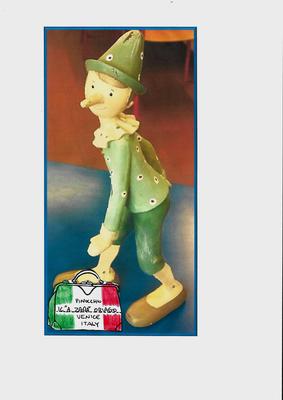
from ITALY Pinocchio's story.docx
Hi! My name’s Pinocchio and I’m from Italy.
I’m a puppet made of wood. I like colours, travelling and having adventures 😊
Some weeks ago I visited the Venetian lagoon because I live nearby, in Oriago on the River Brenta where my school is.
With my nice boat I went to Torcello island where centuries ago the first Venetians settled seeking a new home after Barbarian invasions.
I saw churches, a strange throne made of stone (they say it was Attila’s throne, but it is not true: I know it) and a very special bridge called the Devil’s Bridge.
The legend tells that every December 24th the Devil comes to Torcello under a shape of a black cat waiting for some children’s souls… So don’t go there that night, please!!!
Then I visited Burano, a famous island for its coloured houses, its laces, fishing and its very good biscuits called Buranei: yummy!
Before getting to Venice my last stop was in Murano, another island, with its many glass shops and factories.
I loved watching maestri vetrai (master glass-workers) using glass-blowing to create beautiful objects like animals, chandeliers, bowls and jars.
Then I went to Oriago where my dad Geppetto was waiting for me to have dinner together.
Fish, of course 😉 …